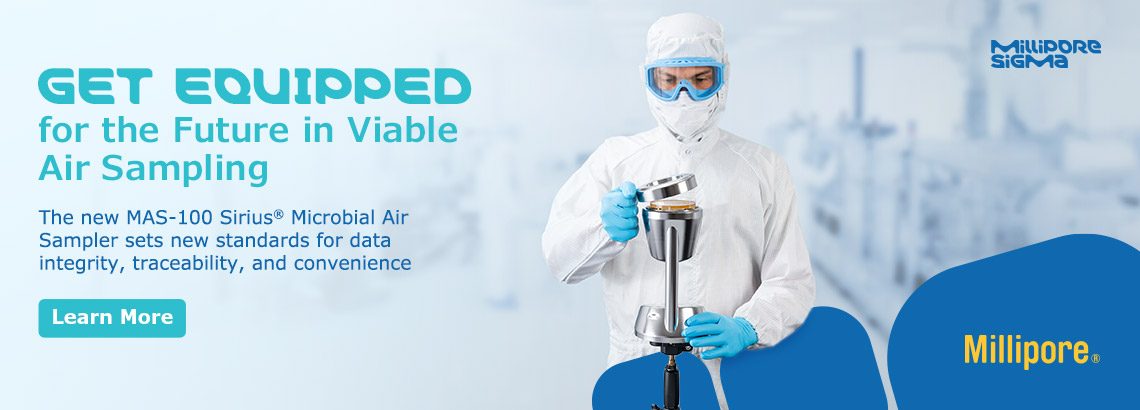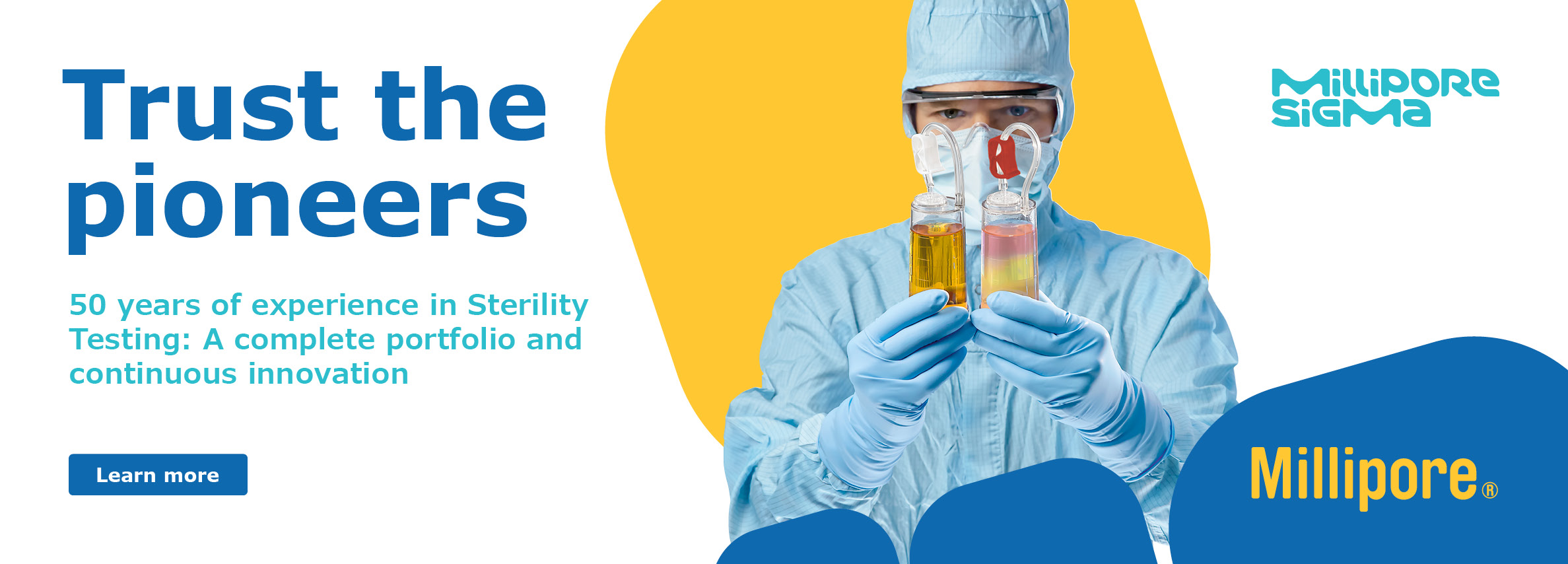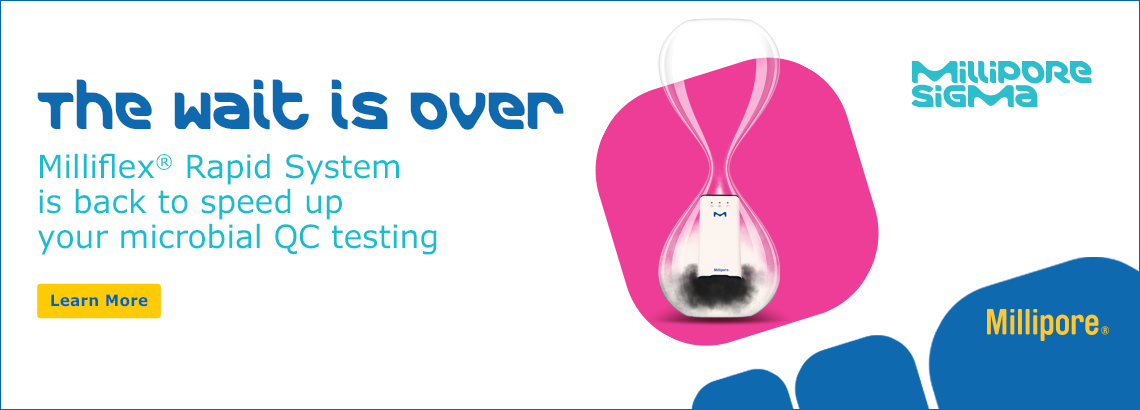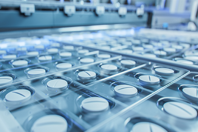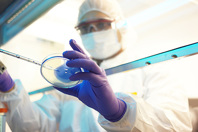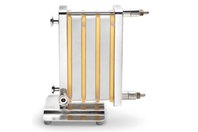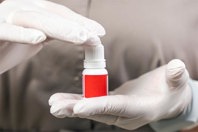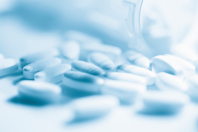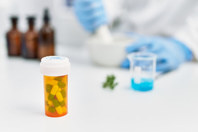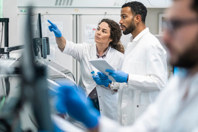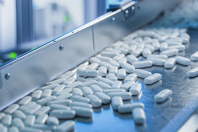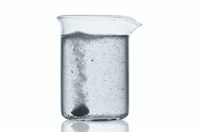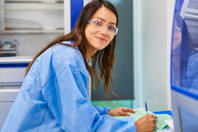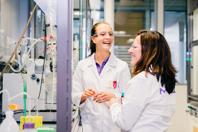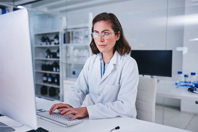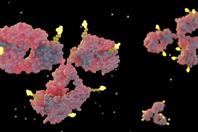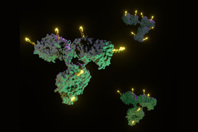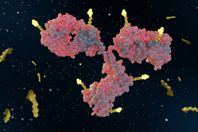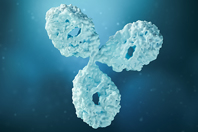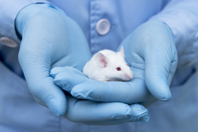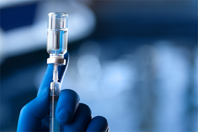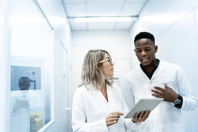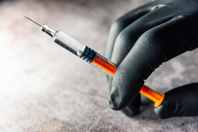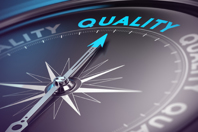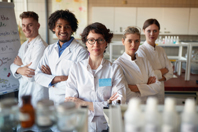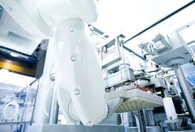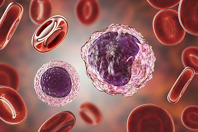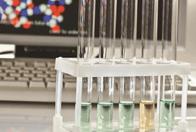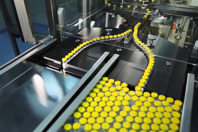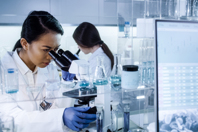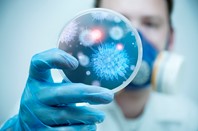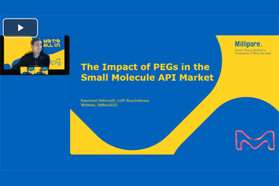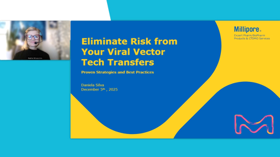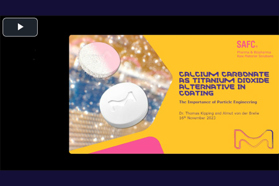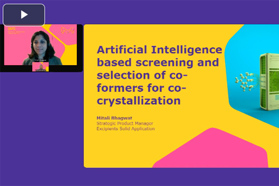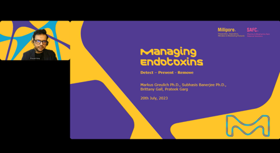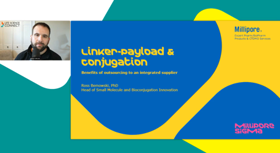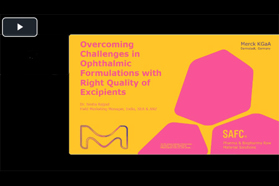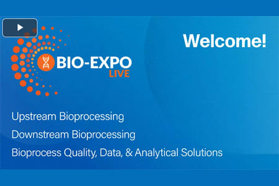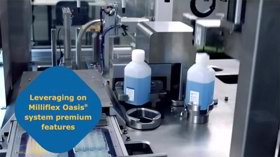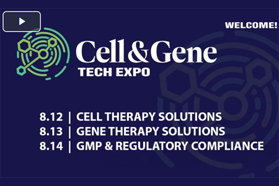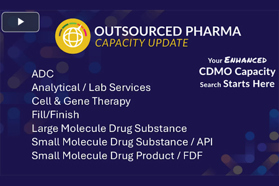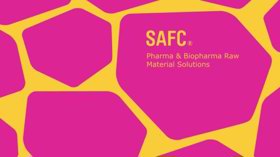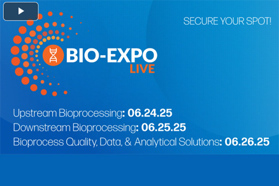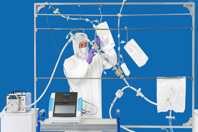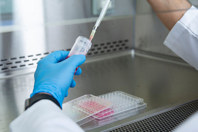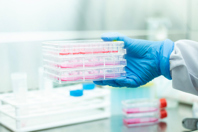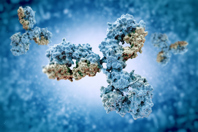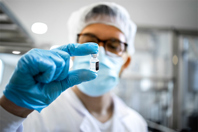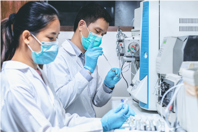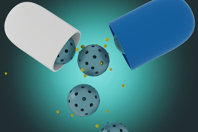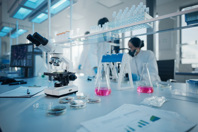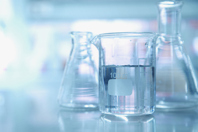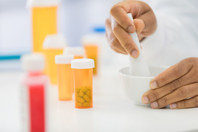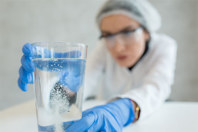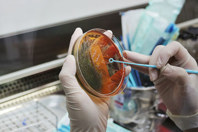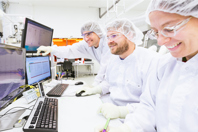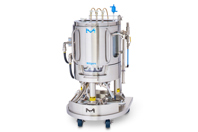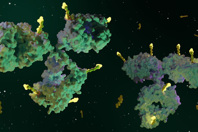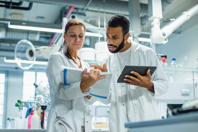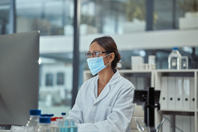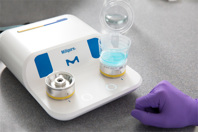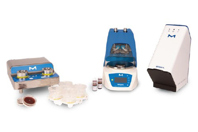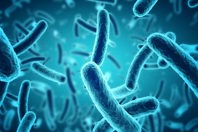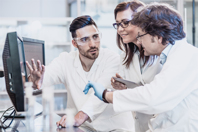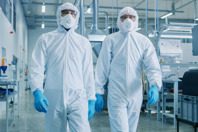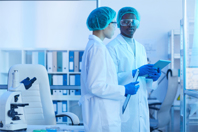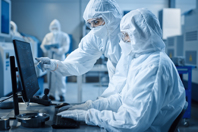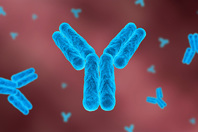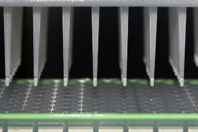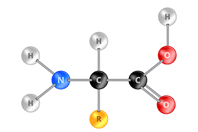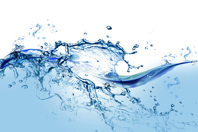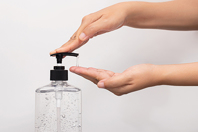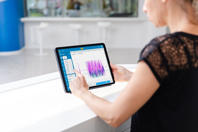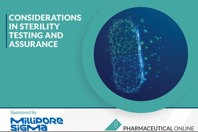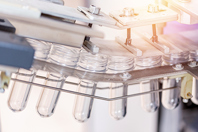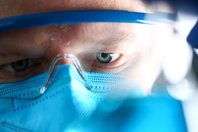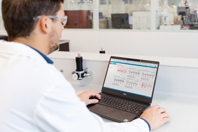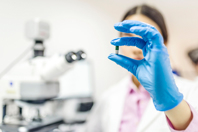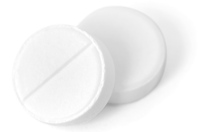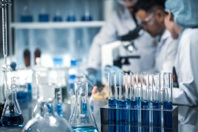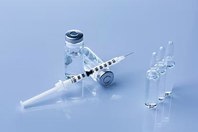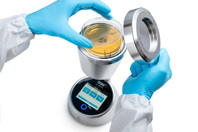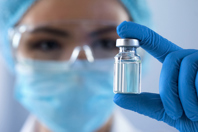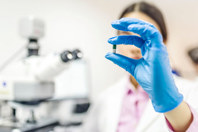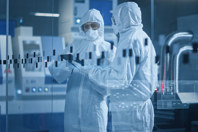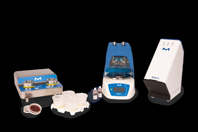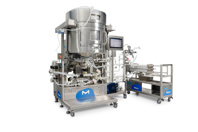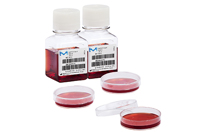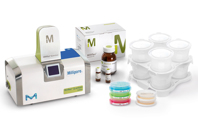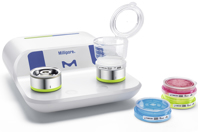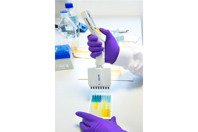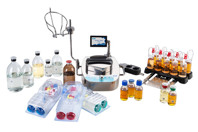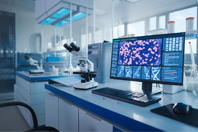
ABOUT MILLIPORESIGMA
The life science business of Merck KGaA, Darmstadt, Germany brings together the world-class products and services, innovative capabilities and exceptional talent of EMD Millipore and Sigma-Aldrich to create a global leader in the life science industry.
At MilliporeSigma, our mission is to help our customers improve human health and life worldwide. This commitment means providing leading life science products and services in ways that also help improve the communities and environment in which we all live.
We re-imagine a future in which:
- Access to health and clean water is available to everyone around the world;
- Life science products not only advance human health, but also help restore and preserve our world; and
- Companies work in harmony with their communities to improve human lives.
We aren’t just re-imagining this future. We are working towards it every day. We invite you to learn more about our leadership commitment and our approach to corporate responsibility, as well as our goals and accomplishments for future-forward products, streamlined operations, and inspired people within and outside of our company.
MILLIPORESIGMA
The life science business of Merck KGaA, Darmstadt, Germany, which operates as MilliporeSigma in the U.S. and Canada, has 19,000 employees and 72 manufacturing sites worldwide, with a portfolio of more than 300,000 products enabling scientific discovery, improving quality of life for patients, fostering the success of customers and helping to meet global challenges. With a mission to streamline and improve the efficiency of analytical processes and methods, the organization has extensive expertise in developing advanced laboratory water solutions, sample filtration, smart chemicals, consumables, instrumentation, microbial testing and overarching digital connectivity for research, industrial, pharmaceutical, and medical applications.
For your pharmaceutical analysis and QC, whether you are working on small or large molecules, you can trust our portfolio and expertise to ensure quality and reliability throughout the entire product characterization, method development, manufacturing and quality control process.
ARTICLES AND WHITE PAPERS
-
Strategic, well-aligned partnerships between sponsors and CDMOs are key to efficient, scalable viral vector technology transfer.
-
Discover how particle-engineered calcium carbonate offers a viable alternative to titanium dioxide in tablet coatings, achieving good opacity, process efficiency, and comparable tablet properties.
-
Redesigning chemical processes with green chemistry principles can cut emissions, reduce waste, and improve efficiency. See how smarter synthesis and digital tools enable sustainable API manufacturing.
-
Learn how to evaluate microbial air samplers based on collection efficiency and flow rate accuracy, as well as key factors that support data integrity and compliance in environmental monitoring programs.
-
Single-pass TFF streamlines downstream processing by reducing footprint, shear exposure, and hold-up volumes. Learn how this approach is advancing efficiency across therapeutic and vaccine production.
-
The growing demand for ophthalmic drugs is driven by aging populations and increased screen time, which contributes to rising eye conditions. Explore innovative solutions in ophthalmic drug development.
-
Handling bulk powders in manufacturing presents serious challenges—from unpredictable caking to safety risks—that can disrupt workflows. Discover solutions to streamline operations and protect your team.
-
Explore the growing role of highly potent active pharmaceutical ingredients in oncology and Antibody-Drug Conjugates to highlight manufacturing challenges, safety protocols, and opportunities for CDMOs.
-
Medicines for infants and children face unique formulation challenges. Learn about the key considerations, including developmental physiology, age specifics, palatability, ease of administration, and precise dosing.
-
Integrating Process Analytical Technology into validated GMP processes is complex and costly, which requires thorough validation of equipment and cleaning methods. Explore more about PAT's role in ADC production.
-
Compressed tablets are common oral solid dosages that contain the API and various excipients. Learn about the critical steps in selecting manufacturing methods and excipients to achieve the desired therapeutic effects and stability.
-
Ensuring adequate solubility is crucial for small molecule drugs' effectiveness. Find out how poor solubility remains a significant challenge, potentially hindering medications from reaching the market.
-
The evolving field of viral vector production, driven by advances in gene and cell therapies, is facing increasing regulatory scrutiny and analytical demands.
-
Explore how eData sharing is used in the biopharma market, enabling standardized, collaborative supply chains that reduce risks and enhance visibility while improving capacity planning.
-
21 CFR Part 11 and Annex 11 regulate electronic records and signatures in biomanufacturing, ensuring data integrity, security, and compliance while enabling efficient processes and regulatory alignment.
-
Continued process verification (CPV) ensures pharmaceutical processes remain controlled by monitoring key parameters, detecting variations, and maintaining product quality.
-
Many companies continue to manually collect data. Utilizing digital technologies can greatly improve productivity and efficiency by enabling real-time monitoring and streamlining regulatory reporting.
-
Explore results from a series of studies evaluating the mixing performance of an innovative ADC reactor during the conjugation step utilizing a model fluid.
-
Learn about how nitrosamines are formed, their prevalence and chemical precursors in pharmaceuticals, techniques for quantification, and approaches for managing nitrite impurities.
-
Explore guidance for evaluating single-use systems for extractables and leachables, and learn how supplier-provided single-use system extractables data can save both time and resources.
-
For ADC developers, obtaining the desired payload can be a challenge, as their synthesis is more complex than most other small molecules. Learn about a more efficient approach to payload synthesis.
-
RNA offers exciting potential for vaccines, gene therapies, and personalized medicine, but challenges related to stability, delivery, and manufacturing persist.
-
Explore how ADC chemistry and manufacturing have evolved, the challenges this dynamic growth has created, and how CDMOs are adapting to these changes to meet customer needs, now and in the future.
-
Explore how one organization built upon 15+ years of experience and an extensive knowledge base of biologics manufacturing to establish commercial-scale ADC manufacturing capabilities.
-
By addressing the complex needs of cell culture from the start, organizations can take steps to optimize their process, ensuring they are maximizing productivity and product quality.
-
Explore results from a study evaluating the effects of different pore sizes on colony size and microbial recovery using membrane filters.
-
The COVID-19 pandemic underscored the vulnerability of global supply chains. Explore lessons learned from the pandemic, the concept of supply chain resilience, what to look for in a supplier, and more.
-
There has been growing awareness about the environmental and ethical implications of plastics used in bioprocessing. The time for a shift to well-studied, proven in vitro cytotoxicity testing is now.
-
Nearly forty biopharmaceutical companies, CDMOs, and research institute executives took part in interviews on the future of vaccine manufacturing. Explore the key findings following these interviews.
-
Recycling plastics from biomanufacturing proves uniquely difficult due to circularity, quality, and infrastructure challenges. Nonetheless, change is underway. Learn how this change is being spearheaded by industry leaders.
-
Long-term collaboration in resilient biomanufacturing capacity and supply chains ensures the reliable delivery of health technologies. Investigate biomanufacturing resilience strategies for biologics.
-
Recent technological advances in mass spectrometry based methods have made it easier to overcome the challenges of glycoprotein analysis.
-
Review a procedure in which compendial testing is complemented by a simultaneous rapid test that uses an identical sample to generate much earlier results while allowing the compendial test to continue.
-
Filter validation is a critical part of various pharmaceutical QC tests. Since QC tests require accurate analyte quantitation, analyte binding is an important factor.
-
In this article, we will explore tips to improve the method of size-exclusion chromatography (SEC), which is often used to measure monomer/aggregate and fragment content of mAbs and ADCs.
-
Discover how the pharma analysis and quality control community envisions future trends and if the challenges faced by your peers are the same as yours.
-
In QC, there is still huge potential to accelerate the release of safe products. Here, we review ways to boost the reliability, data integrity, and productivity of microbiological testing.
-
The ability of the Mono-Mac-6 cell line to detect non-endotoxin pyrogens is sometimes questioned. To demonstrate its performance, tests have been performed using a wide panel of monocytic TLRs ligands.
-
Learn how Bio4C ProcessPad™ meets 21 CFR Part 11 requirements including unique usernames and passwords, timestamped audit trails, and secure storage of all records.
-
Because characterization and comparison of originator and biosimilar candidate mAbs is challenging due to their complex and variable structures, a range of analytical techniques should be employed.
-
The measurement of pyrogens is an important safety measure for parenterally administered drugs. Here, we explore several advantages the Monocyte Activation Test (MAT) provides over the rabbit pyrogen test.
-
Get updated on recent and current advances in metabolome analysis by mass spectrometry with this introduction to the different approaches and technologies.
-
This study investigates the efficiency of disinfectant-neutralizing agents added to culture media in the presence of several commercially available disinfectants.
WEBINARS AND PODCASTS
BROCHURES AND GUIDES
- Co-Crystal Prediction Service
- A Viral Safety Solution Designed To Provide Retention Assurance And Productivity
- The Optimum Tangential Flow Filtration Devices For mAb's
- The Device Of Choice For Applications Requiring Higher Yield
- Regionalized Filter Supply Chain: Biopharma Supply, Reimagined
- Achieve Higher Targeted Concentrations
- Keep A Close Eye On Quality With Excipients For Drug Formulation
- Addressing Your Requirements For Parenteral Applications
- Granulated Materials: Easy Handling For Improved Process Efficiency
- A High-Purity Excipient Suitable For High-Risk Vaccine Applications
- An Alternative Suitable For High-Risk Applications
- Unlock Amorphous Solubility Enhancement For Challenging Compounds
- API Stability Combined With Rapid Disintegration
- Polyvinyl Alcohol For Hot Melt Extrusion
- Reducing Risk And Improving Synthesis Outcomes In Drug Discovery
- Digital Data: Your Roadmap To Supply Chain Efficiency
- A First-Of-Its-Kind Advanced Qualification Dossier
- Mobius® ADC Reactor
- MGB:EDQ Probes For qPCR
- A Complete Portfolio Of Services Supporting Your QC Micro Laboratory
- Complete Sterility Testing Solutions For Complete Confidence
- Sterility Testing Media And Rinse Fluids
- Large-Scale API Production Services
- Highly Potent And Complex API Contract Manufacturing
- Simplify Your Linker-Payload Synthesis
- ADC And Bioconjugation Center Of Excellence
- Comprehensive ADC And Bioconjugation Services For Targeted Therapies
- Granulated Materials
- Digitalize Your Validation Procedures For Microbial QC Testing
- Software To Automate And Digitalize Data Recording Steps In QC Workflows
- Solution For Rapid Sterility And Bioburden Testing
- Supel™ BioSPME 96-Pin Devices
- Chiral HPLC Columns For Chiral HPLC And LC-MS Separations
- Using Digitalization To Optimize Your Contamination Control Strategy
- Resins Selection Guide
- Selection Guide For High-Performance Filtration Devices
- Bio4C ProcessPad™ Software Datasheet
- Supel™ BioSPME 96-Pin Devices For Fast And Simple Plasma Protein Binding Studies
- Separate Proteins, Peptides & Glycans Faster With BIOshell™ U/HPLC Columns
- RP-HPLC Columns For Proteins And Peptides
- Non-Destructive, Rapid Microbial Detection System
- Microbial Culture Media For Quality Control Of Non-Sterile Products
- Detection Of Endotoxin And Non-Endotoxin Pyrogens By MAT
- Secure Your Pharma Analysis & QC
- A Quick Guide To Dissolution Testing
- The Full Range Of Mycoplasma Culture Media
- Secure, Reliable, And Convenient Contact and Settle Plates
- Leading Solutions For Air And Gas Monitoring
- Software For Trusted And Efficient Data Recording
VIDEOS
CONTACT INFORMATION
MilliporeSigma
400 Summit Drive
Burlington, MA 01803
UNITED STATES
Phone: 978-762-5100
APPLICATION NOTES
-
Cell culture performance remained consistent across PES and PVDF filters, even under worst-case filtration conditions. Discover a practical framework for evaluating membrane impact on CHO cell growth.
-
Excipients are essential to parenteral formulations, which help protect APIs, enhance stability, and ensure safety. Learn how strategic excipient selection can optimize drug performance and patient outcomes.
-
Streamline your upstream bioprocessing with seed train intensification. Discover how high cell density cryopreservation reduces scale-up time, boosts consistency, and enhances manufacturing flexibility.
-
Explore how perfusion technology is transforming upstream bioprocessing by boosting productivity, reducing costs, and enabling process intensification while overcoming cell retention challenges.
-
ADC's offer precise, targeted therapy by delivering cytotoxic agents directly to diseased cells. Learn how this method minimizes harm to healthy tissue and revolutionizes treatment for cancer.
-
Explore an ethical and sustainable alternative to shark-derived squalene that is backed by robust data to deliver identical performance in vaccine formulations without environmental compromise.
-
Raman spectroscopy revolutionizes ADC manufacturing by enabling real-time monitoring of solvent clearance. Discover how it enhances process control, ensures regulatory compliance, and supports the production of high-quality therapeutics.
-
Poor solubility of active pharmaceutical ingredients can hinder drug effectiveness. Learn how innovative formulation strategies enhance solubility and bioavailability to improve therapeutic outcomes for challenging drug candidates.
-
Enhancing the solubility of poorly soluble APIs is vital for improving bioavailability. Discover how advanced formulation techniques like hot-melt extrusion and spray drying can overcome this challenge.
-
Solubility and dissolution rate of an API are essential for effective oral drug absorption. Discover how these factors directly influence bioavailability, which determines how much and how quickly a drug enters circulation.
-
Pharmaceutical excipients like mannitol enhance formulation stability, flowability, and compressibility, which are crucial for robust tablets. Read how these properties improve patient compliance.
-
Solubility of active pharmaceutical ingredients (APIs) is a challenge in drug development. Discover how hot melt extrusion with polyvinyl alcohol enhances API solubility and stability to offer improved drug delivery.
-
Mammalian cells are widely used to produce complex processed molecules. Explore a system that effectively detects microbial contamination in mammalian cell cultures and utilizes a newly formulated lysis buffer.
-
Incorporating phase-specific quality standards ensures GMP compliance. Collaborating with an experienced CDMO addresses late-stage quality needs and efficiently manages development timelines.
-
Learn about multivariate data analysis (MVDA) techniques, like PCA and PLS, that enable near real-time monitoring, prediction, and optimization of biomanufacturing processes.
-
Explore study results evaluating the physical compatibility of single-use components in the Mobius® ADC Reactor and the level of extractables when exposed to dimethyl sulfoxide and dimethyl acetamide.
-
Explore findings from a study testing Mobius® single-use bags under rigorous shipping conditions, demonstrating the suitability for transporting various liquid volumes while preserving their integrity.
-
Learn about a family of single-use ADC reactors that has been developed to offer a safer and more efficient ADC production method than traditional mixing systems and meet the industry's growing needs.
-
Adventitious agent testing is frequently a bottleneck in downstream processing. Discover a PCR-based solution for manufacturing processes using CHO cells and animal origin-free components.
-
Drugs formulated with antibiotics, preservatives, or other chemicals may inhibit microbial viability and growth. Learn more about three golden rules to be effective against antimicrobial effects.
-
Discover one possible test set-up to dilute a product in isopropyl myristate, filter it, and rinse the membrane to eliminate residues that may inhibit microbial growth.
-
Discover a chito-oligosaccharide that significantly improves the solubility of antibody-drug conjugates (ADCs) when included in the linker-payload construct.
-
Accurate testing results are crucial for product safety. Explore the findings of a comparative study evaluating two different platforms for the membrane filtration of microorganisms in quality control.
-
In this study, two different immune cell preparations were evaluated for their compatibility with the Milliflex® Rapid System to establish a USP and EP compliant method for rapid sterility testing.
-
This study was designed to prove the suitability of ICR Swabs and lockable TSA w. LTHThio contact plates to detect low numbers of different bacterial test strains from Neoprene® gloves.
-
Contact plates and swabs are commonly used for surface monitoring in aseptic manufacturing. Here, we demonstrate the recovery rates of MilliporeSigma’s ICR Swabs and lockable TSA w. LTHThio contact plates.
-
Environmental monitoring plays an important role in pharmaceutical manufacturing contamination control. Learn how MilliporeSigma and the BioTrends EM® software system pair together for your data analytics.
-
Simplify seed train intensification with high cell density cryopreservation. Eliminate the need for manual scale-up steps and enable risk reduction through closed banking and inoculation processes.
-
Explore a complete reversed phase UHPLC-MS workflow, developed to simplify middle-up mass analysis of an immunoglobulin G antibody, from the antibody purification, proteolysis, and reduction to its UHPLC-MS analysis.
-
Here, we demonstrate the use of the Supel™ Carbon LC UHPLC column to baseline separate the vitamin D2 and D3 forms from the D2 and D3 epimers.
-
Characterizing mAb aggregate and fragment formation during drug formulation and establishing a suitable quality control process is essential. Learn about a complete workflow for antibody aggregate and fragment quantification.
-
Here, we review a technology that has been demonstrated to significantly reduce the time required for protein binding determination when compared with the rapid equilibrium dialysis method.
-
The wide-ranging polarities spanning across all 20 amino acids can make analysis challenging. Learn about an LC-MS/MS method that achieves this, without derivatization, utilizing a carbon LC column.
-
Various water samples were tested to assess the ability of the Milliflex® Quantum System to detect microbial contaminants quicker and to evaluate the reduction of time-to-final result compared to the compendial method.
-
Ethanol and gel-based disinfectants must undergo QC controls to ensure an acceptable bioburden level. Discover a sensitive method for the quantitative rapid detection of contaminants in filterable samples.
-
Proper characterization of therapeutic mAbs is essential for ensuring drug safety and efficacy. Discover a complete SEC-MS workflow, developed to enable rapid glycoprofiling of mAbs in cell culture supernatants.
-
How much quicker and easier would it be if we could know the process’s health by looking at a single metric rather than checking hundreds of parameters?
E-BOOKS
-
Explore how sterility assurance, including sterilization validation and environmental monitoring, is essential for controlling microbial contamination in mammalian cell production to ensure patient safety.
-
The modern microbiology laboratory is starting to look very different from the laboratory of even 10 years ago. The work will be similar, yet technology will have advanced. Automation, in particular, is taking center stage.
-
Explore expert insights into newer, faster, and more efficacious strategies for peptide mapping, the analysis of novel biotherapeutic products, and more.
-
This practical guide on all aspects of high-performance liquid chromatography (HPLC) method development will help you make it through the maze of HPLC options.
-
This eBook describes automation of continued process verification and offers a one-click solution for statistical trending of data, campaign reports, and annual product quality review.
INFOGRAPHICS
- Tackling The Toughest Small Molecule Challenges
- Contrast In Oligonucleotides
- mRNA Process And Cost Modeling: A Tool To Optimize Process Development
- Millipore® CTDMO Services: The Industry's Experienced Choice
- Proper Choice Of Reference Standards To Ensure Compliance
- Overcome Biologics Development & QC Challenges
- How To Shift From Animal-Based Pyrogen Testing To In Vitro Testing
- Quick Tips For An Easy Protein Extraction
- The Advantages Of Raw Material eData Exchange
Q&A
-
Gain insight into the issues and obstacles faced by pharmaceutical companies, the current regulatory framework surrounding viral vaccines, and how one company is preparing for the next outbreak.
-
Experts explain what a pyrogen is as well as the differences between an endotoxin pyrogen and a non-endotoxin pyrogen. Learn why it is immensely important to detect non-endotoxin pyrogens.
-
Tim Sandle, Head of Microbiology at BPL and visiting tutor of the University of College London & University of Manchester, answers questions about pyrogen and endotoxin tests, regulations, and more.
-
Find responses to the 20 most burning questions surrounding microbial testing, analytical testing, vaccine development, dissolution testing, method development, data traceability, regulations, and more.
PRODUCTS
-
Titanium dioxide is extensively used in solid dosage forms as an opacifier and colorant. Due to regulatory developments and restrictions by authorities, formulators are increasingly interested in titanium dioxide-free solutions for both dietary supplements and medicinal products. Uniform colored and white coatings applied to tablets not only have an aesthetic function but also improve patient compliance.
-
When it comes to solid dosage formulations, the most common challenge formulators face is poor solubility. In numbers: 70% of drugs in development are poorly soluble.
-
Sterility is key for high-risk applications such as injectables, parenteral formulations, ophthalmic and peritoneal dialysis solutions, and many more.
-
By combining proven performance, refined data handling and smart features, the MAS-100 Sirius® air sampler makes active air monitoring in high-grade cleanrooms more reliable and convenient than ever before.
-
Enabling you to design vaccines without reliance on animal sources with our fermentation-produced squalene.
-
From safety considerations to kid-friendly dosing, we can help you get your pediatric formulation right.
-
SMALL MOLECULE SYNTHESIS, FROM PRECLINICAL TO COMMERCIAL QUANTITIES
With Millipore® CTDMO Services we support small molecule API synthesis projects from milligram to commercial quantities. We are the partner to address the most difficult challenges, whether the target is difficult to handle, synthesize, or source. With a true consultative and partnered approach, our services reduce complexity and minimize program risk in a cost-effective manner.
-
Immerse yourself in a self-guided, virtual tour of an M Lab™ Collaboration Center!
-
The Milliflex® Rapid System 2.0 brings together membrane filtration and ATP bioluminescence to detect, image and quantify microcolonies of bacteria, molds and yeasts up to 4 times faster than compendial bioburden or sterility testing methods.
-
Processing large batch sizes in one run using single-use equipment is a challenge. The Mobius® TFF 80 system has been designed for large-scale tangential flow filtration, with flow rate capabilities up to 80 L/min and up to 20 m2 of membrane area installed.
-
As the only major supplier worldwide, we offer all three media to test for Mycoplasma according to EP 2.6.7 and USP 63 as both broth and agar plates. These ready-to-use Friis, Frey, and Hayflick culture media help to make the cumbersome compendial procedures of testing cell cultures, raw materials, intermediates, and final products for mycoplasmas easier.
-
Traditional bioburden testing (or microbial limit testing) takes several days to grow visible colonies of microorganisms, so identifying these and initiating corrective action takes longer. The Milliflex® Quantum system quantitatively detects microbial contamination in filterable samples in as little as a third of the time it takes with traditional plate-based monitoring methods. The Milliflex® Quantum system is based on fluorescent staining of all viable microorganisms, making emerging microcolonies visible to the system when they’re still too small to be seen with the naked eye. After rapid detection, the colonies can be reincubated to grow into visible colonies and be identified by any method—an approach that cleverly combines rapid and compendial bioburden testing.
-
Bioburden testing and microbial limit testing are quality control tests for determining the total number of viable microorganisms of pharmaceutical and medical products. Thanks to its many cleverly designed features, the Milliflex Oasis® is a particularly productive and reliable membrane filtration method for performing bioburden testing in accordance with USP, EP, and JP recommendations, ensuring that patients can call upon microbially safe products.
-
Pyrogen detection is one of the mandatory release tests for sterile parenteral drugs testing in the course of pharmaceutical quality control. Test methods being used are the rabbit pyrogen test (RPT), the bacterial endotoxin test (or LAL test), and the monocyte activation test (MAT).
-
Sterility testing is a requirement to confirm that pharmaceutical products purporting to be sterile do not contain viable microorganisms before being released and administered to patients. So, it is vital that the method used for testing medical devices, pharmaceutical products, formulations, tissue materials, and other products is both reliable and accurate.
-
Quality control is a critical component for ensuring safety, efficacy, and consistency in the development and production of biologics. This comprehensive list of strategies, techniques, workflows, and best-in-class products for developing biopharmaceuticals can help you navigate the complexities of biologics and simplify the manufacturing process. Improve your quality control procedures and optimize your biologics production process with tools and expertise relied upon by researchers worldwide.
-
To effectively monitor product quality, it is critical to test for microbial contamination throughout the pharmaceutical manufacturing process. Sterility testing is a vital step to ensure products purporting to be sterile do not contain viable microorganisms prior to their distribution and administration to patients. Consequently, it is of utmost importance that the testing method employed for products, formulations, tissue materials, and medical devices is both accurate and reliable. Explore a collection of streamlined sterility testing solutions and expert guidance on sterility testing, quality control (QC), and data integrity. Optimize your sterility testing and QC procedures with world-leading tools and technologies that can help you ensure full traceability and regulatory compliance.
-
Filtration is a critical aspect of pharmaceutical manufacturing, as it helps to ensure the quality, safety, and purity of the final product. This comprehensive list of strategies to reduce bioburden, guidance on filtration selection, and expert insights on regulation, filtration, sampling, and quality control can help you optimize your contamination control strategy and ensure effective filtration in your production process. Explore high-performance specialty membranes and filtration devices relied upon by laboratories worldwide and across the academic, pharmaceutical, biotechnology, and industrial sectors.

